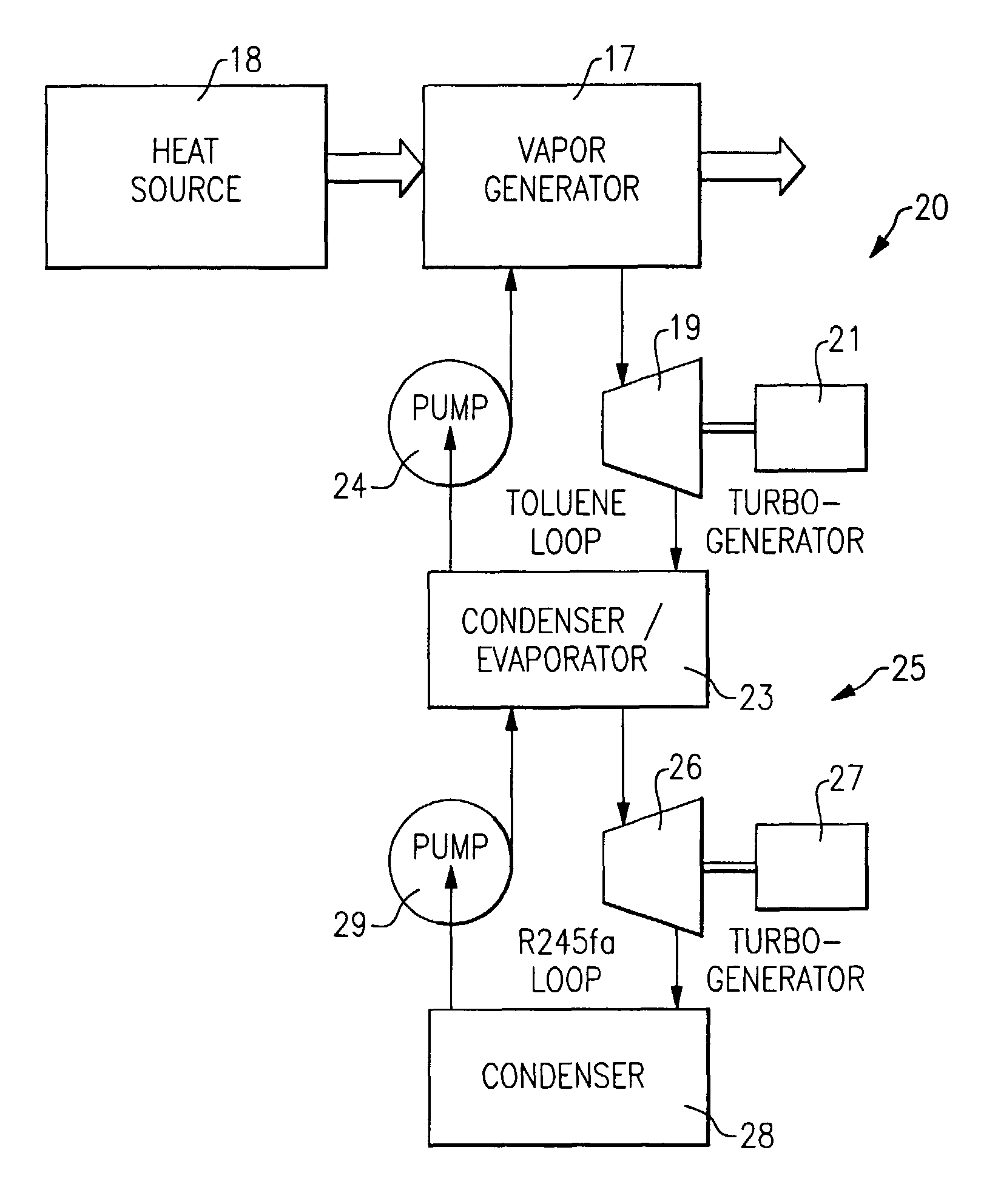Cascaded organic rankine cycles for waste heat utilization
a rankine cycle and organic technology, applied in steam engine plants, machines/engines, mechanical equipment, etc., can solve the problems of system, although very cost-effective, not fully taking advantage of the thermodynamic potential of waste heat streams, and achieves substantial reduction of waste heat loss to the atmosphere and greater efficiency
- Summary
- Abstract
- Description
- Claims
- Application Information
AI Technical Summary
Benefits of technology
Problems solved by technology
Method used
Image
Examples
Embodiment Construction
[0020]Referring now to FIG. 1, a conventional type of organic Rankine cycle system is shown to include an evaporator / boiler 11 which receives waste heat from a source as described hereinabove. The heated working fluid passes to the turbine 12, where it is converted to motive power to drive a generator 13. The resulting lower temperature and pressure working fluid then passes to a condenser 14 where it is converted to a liquid, which is then pumped by the pump 16 back to the evaporator / boiler 11.
[0021]In such a typical system, a common working fluid is toluene. In the vapor generator 11 the working fluid has its temperature raised to around 525° F. after which it is passed to the turbine 12. After passing through the turbine 12, the temperature of the vapor drops down to about 300° F. before it is condensed and then pumped back to the evaporator / boiler 11.
[0022]Shown in FIG. 2 is a TS diagram of the organic rankine cycle system illustrated in FIG. 1, using toluene as the working flui...
PUM
 Login to View More
Login to View More Abstract
Description
Claims
Application Information
 Login to View More
Login to View More - R&D
- Intellectual Property
- Life Sciences
- Materials
- Tech Scout
- Unparalleled Data Quality
- Higher Quality Content
- 60% Fewer Hallucinations
Browse by: Latest US Patents, China's latest patents, Technical Efficacy Thesaurus, Application Domain, Technology Topic, Popular Technical Reports.
© 2025 PatSnap. All rights reserved.Legal|Privacy policy|Modern Slavery Act Transparency Statement|Sitemap|About US| Contact US: help@patsnap.com



